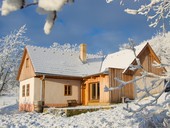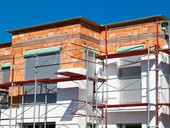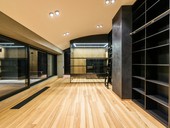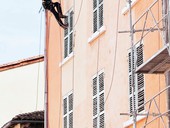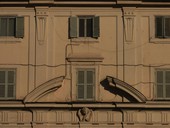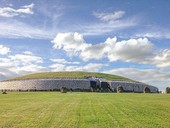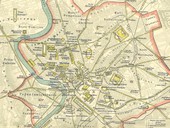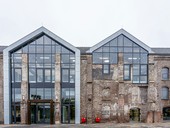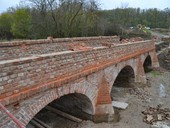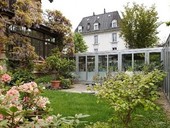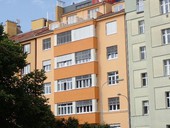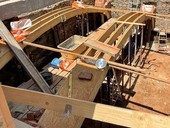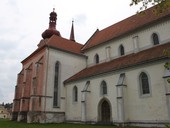Building with earth is gaining increasing attention, partly because there are many high-quality historical and contemporary earthen buildings in our country. Documenting the extent of the earthen building heritage has the potential to strengthen the perception of earthen construction as a valuable part of cultural heritage and as a promising tool for sustainable construction. This article presents the research framework, methodology, and starting points for the upcoming map output Historical Earthen Buildings in the Czech Republic, which aims to systematically map the occurrence, frequency, and typology of these structures.
Archiv článků od 1.4.2024 do 28.12.2025
This article outlines the assessment and market placement of External Thermal Insulation Composite Systems (ETICS) in the Czech Republic and the EU. It compares national (STO) and European (ETA/EAD) procedures, focusing on manufacturers’ duties in quality management and conformity assessment. Key changes include the new EAD 040083-01-0404, the phase-out of ETAG 004, and the forthcoming harmonized standard EN 17237. Selected test methods—hygrothermal performance, water absorption, mechanical resistance, adhesion, and pull-through resistance of anchors are presented. The paper describes the role of certification bodies.
This article focuses on the composition and restoration of plasters of historical buildings, carried out since the 20th century, especially from its second half until today. The binders, admixtures, and additives used for plasters in the past are described, and the differences in their properties compared to those of current materials are discussed. The principles of plaster restoration using various methods of preparing plaster mortar mixtures are described. Attention is also paid to the types and properties of plasters for damp masonry containing water-soluble salts. Disagreeing opinions on restoration from the perspective of architectural heritage care and technologists are also discussed.
This article focuses on the composition and restoration of plasters of historical buildings, carried out since the 20th century, especially from its second half until today. The binders, admixtures, and additives used for plasters in the past are described, and the differences in their properties compared to those of current materials are discussed. The principles of plaster restoration using various methods of preparing plaster mortar mixtures are described. Attention is also paid to the types and properties of plasters for damp masonry containing water-soluble salts. Disagreeing opinions on restoration from the perspective of architectural heritage care and technologists are also discussed.
The article deals with a specific form of funerary architecture, namely contemporary columbaria made of earth. After summarizing the specifics of earthen funerary architecture, the article presents examples of contemporary earthen columbaria realizations in Europe. The description includes information about the authors, the date of construction, dimensions, general characteristics and photographs of these selected projects. The article deals in detail with the architectural form, spatial arrangement, material solutions, conceptual approach to the design and the actual construction of the building.
Columbaria, serving as repositories for urns with the ashes of the deceased, represent a significant element of funerary architecture, whose form has evolved considerably throughout history. From ancient Roman structures, characterized by the regular division of niches for urn placement, to contemporary minimalist, eco-friendly, and digitally connected burial spaces, columbaria reflect changes in approaches to cremation and funerary culture in general. This article presents the architectural development of columbaria, emphasizing material solutions, spatial organization, and technological innovations.
Funerary architecture, in conjunction with funeral rituals and religious traditions, has undergone numerous transformations over the centuries. These changes have been influenced by technological advancements, shifts in the perception of death and the afterlife, as well as urban and hygienic requirements of different historical periods. This article outlines the historical development of funerary architecture, its main forms, social and religious aspects, and presents the most significant funerary structures that have shaped history and continue to influence contemporary approaches to funerary architecture. The primary focus is on the diversity of architectural forms of funerary structures, their symbolism, and their role in the collective memory of society.
The fourth and last part of the series of articles on the problem of masonry buildings situated in floodplains deals with the problem of loading of buildings during the passage of a flood wave. Specifically, the calculation of the load from the vertical buoyancy of water from the flood wave, the load from the dynamic pressure and the load from the dynamic effect of a floating object.
The third part of the series of articles on the problems of masonry buildings located in flood-prone areas deals with the possibilities of rehabilitation of damp masonry partitions after the water from the flood wave has hit. Furthermore, it deals with the issue of underground structures and the flood area, which is also a submerged area. The third part concludes with an introduction to the issue of loading of buildings during the passage of a flood wave.
The second part of the first series of articles on the problems of masonry buildings located in floodplains deals with the peculiarities of historic and listed buildings. It also deals with the treatment of expansion joints, protection against water pressure and the treatment of the internal distribution of technical equipment of buildings. Last but not least, it deals with the issue of rehabilitation of buildings after a flood wave.
The article discusses the history of sanitation installation, i.e. water installation, drainage systems inside buildings and gas installation pipework for buildings from the earliest times to 1948 and is primarily focused on the history of this field in the territory of the former Czechoslovakia. It also deals with the history of the plumbing trade, contemporary legal regulations, technical standards and professional literature on the territory of the former Czechoslovakia.
The paper discusses the possibilities of diagnosing historical masonry structures by using non-destructive and destructive testing methods. First, the compressive strength of the masonry elements and the compressive strength of the mortar are determined, then the characteristic compressive strength of the masonry is calculated. It is important to assess the bond of the masonry and determine the presence of cracks. Finally, the moisture content and salinity of the masonry shall be determined.
History of Burnt Masonry Elements, Their Identification and Reuse in the Reconstruction of Monuments
The contribution focuses on the current topic of the replacement of historical burnt bricks in heritage-protected buildings. It presents the possibilities of selecting an adequate replacement by recycling historical masonry elements taken from demolished buildings while meeting the requirements placed on current masonry elements with an emphasis on their durability. A resonance method for classifying bricks into quality groups is presented here, along with basic aspects characterizing bricks from different historical periods, which represent another criterion for assessing their suitability for use in historical constructions.
In our practice, we often face the question of building stone provenance on historic buildings. However, methods providing relevant answers to this question are mostly of a destructive character requiring sampling. Therefore, our research has focused on the use of reflectance spectrometry, which is a very promising and effective non-destructive method. This paper discusses the basic principles and possibilities of this method with regard to its application to historic buildings and decorative stone.
This article focuses on the renovation and densification of existing single-family homes in the suburbs of larger cities in the Czech republic, built between 1996-2005. After defining the current issues and summarizing the theoretical approaches of sustainable suburban development, it discusses examples of suburban renewal from European countries and suggests possible applications and further research of these strategies in Czech conditions.
The preserved detailed data on the consumption of fuel (coke) for heating and hot water preparation in functionalist apartment building from the 1930s led to the idea to compare the energy consumption of these buildings at the time of their construction with the present day and to observe how the modernization interventions in both the heating system and the actual construction of the building are manifested and to quantify these modernization interventions.
The paper presents the original condition of the castle in Nemyšl near Tábor together with the subsequent process of its rehabilitation. This requires a careful evaluation of its condition, determination of the remediation procedure along with condition monitoring to ensure safety on the construction site. To accomplish this task - the abbreviation SHM (Structural Health Monitoring) is used abroad - the available possibilities of current information technologies have been used.
The paper deals with the role of engineers in the contemporary world. In particular, it is focused on presenting the current possibilities in preserving historical monuments and their maintenance. In two case studies, point out the new possibilities offered by computer technology and connecting the involved actors through the web. It also mentions the WEC 2023 World Engineering Convention in a certain way. Due to the scale, the first, general part is presented first, which is supplemented by the concept verification while monitoring the retaining wall of St. James Church in Nepomuk. In the following separate paper, an example of the use of these technologies in the rehabilitation of the castle in Nemyšl is presented in more detail.
zpět na aktuální články
